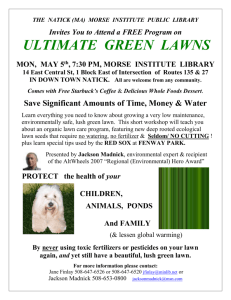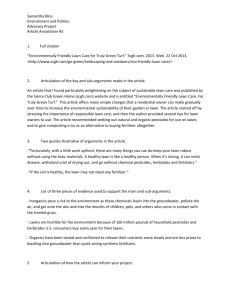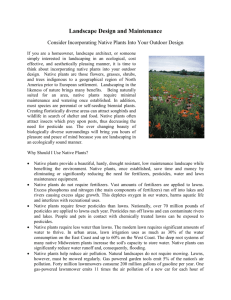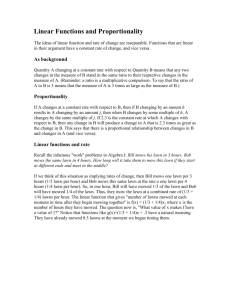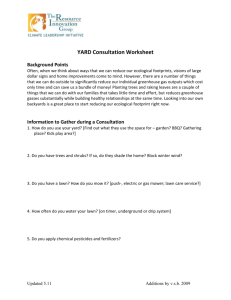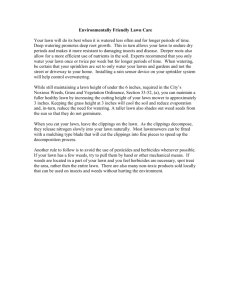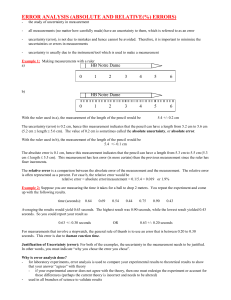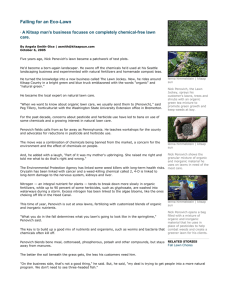the environment: soil
advertisement
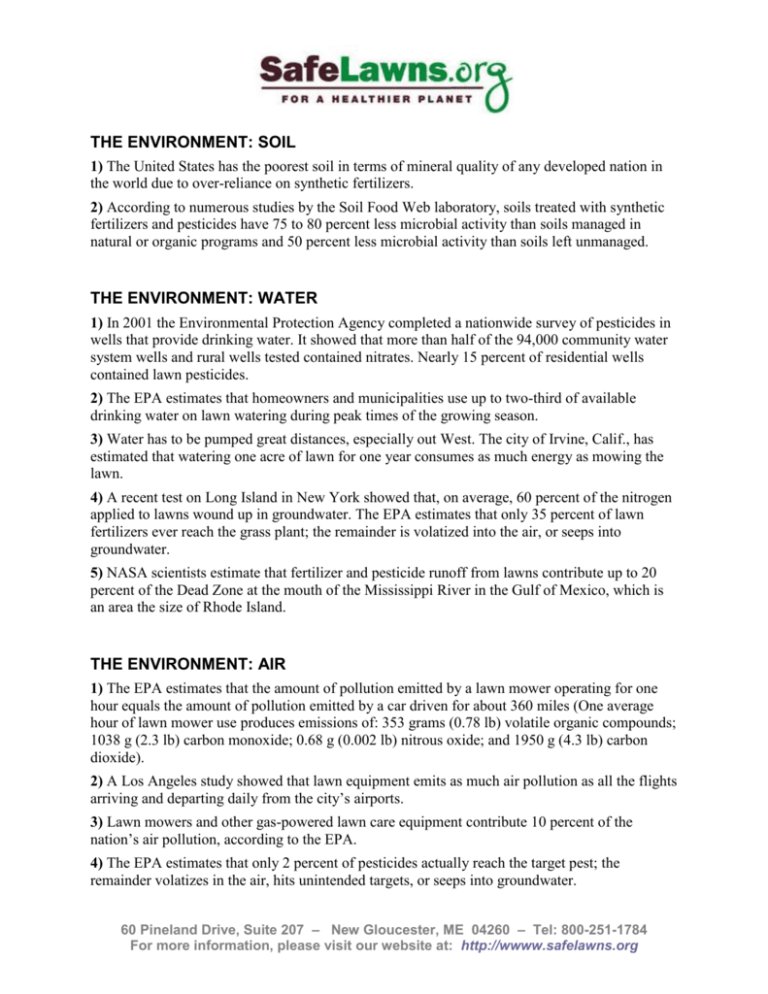
THE ENVIRONMENT: SOIL 1) The United States has the poorest soil in terms of mineral quality of any developed nation in the world due to over-reliance on synthetic fertilizers. 2) According to numerous studies by the Soil Food Web laboratory, soils treated with synthetic fertilizers and pesticides have 75 to 80 percent less microbial activity than soils managed in natural or organic programs and 50 percent less microbial activity than soils left unmanaged. THE ENVIRONMENT: WATER 1) In 2001 the Environmental Protection Agency completed a nationwide survey of pesticides in wells that provide drinking water. It showed that more than half of the 94,000 community water system wells and rural wells tested contained nitrates. Nearly 15 percent of residential wells contained lawn pesticides. 2) The EPA estimates that homeowners and municipalities use up to two-third of available drinking water on lawn watering during peak times of the growing season. 3) Water has to be pumped great distances, especially out West. The city of Irvine, Calif., has estimated that watering one acre of lawn for one year consumes as much energy as mowing the lawn. 4) A recent test on Long Island in New York showed that, on average, 60 percent of the nitrogen applied to lawns wound up in groundwater. The EPA estimates that only 35 percent of lawn fertilizers ever reach the grass plant; the remainder is volatized into the air, or seeps into groundwater. 5) NASA scientists estimate that fertilizer and pesticide runoff from lawns contribute up to 20 percent of the Dead Zone at the mouth of the Mississippi River in the Gulf of Mexico, which is an area the size of Rhode Island. THE ENVIRONMENT: AIR 1) The EPA estimates that the amount of pollution emitted by a lawn mower operating for one hour equals the amount of pollution emitted by a car driven for about 360 miles (One average hour of lawn mower use produces emissions of: 353 grams (0.78 lb) volatile organic compounds; 1038 g (2.3 lb) carbon monoxide; 0.68 g (0.002 lb) nitrous oxide; and 1950 g (4.3 lb) carbon dioxide). 2) A Los Angeles study showed that lawn equipment emits as much air pollution as all the flights arriving and departing daily from the city’s airports. 3) Lawn mowers and other gas-powered lawn care equipment contribute 10 percent of the nation’s air pollution, according to the EPA. 4) The EPA estimates that only 2 percent of pesticides actually reach the target pest; the remainder volatizes in the air, hits unintended targets, or seeps into groundwater. 60 Pineland Drive, Suite 207 – New Gloucester, ME 04260 – Tel: 800-251-1784 For more information, please visit our website at: http://wwww.safelawns.org
